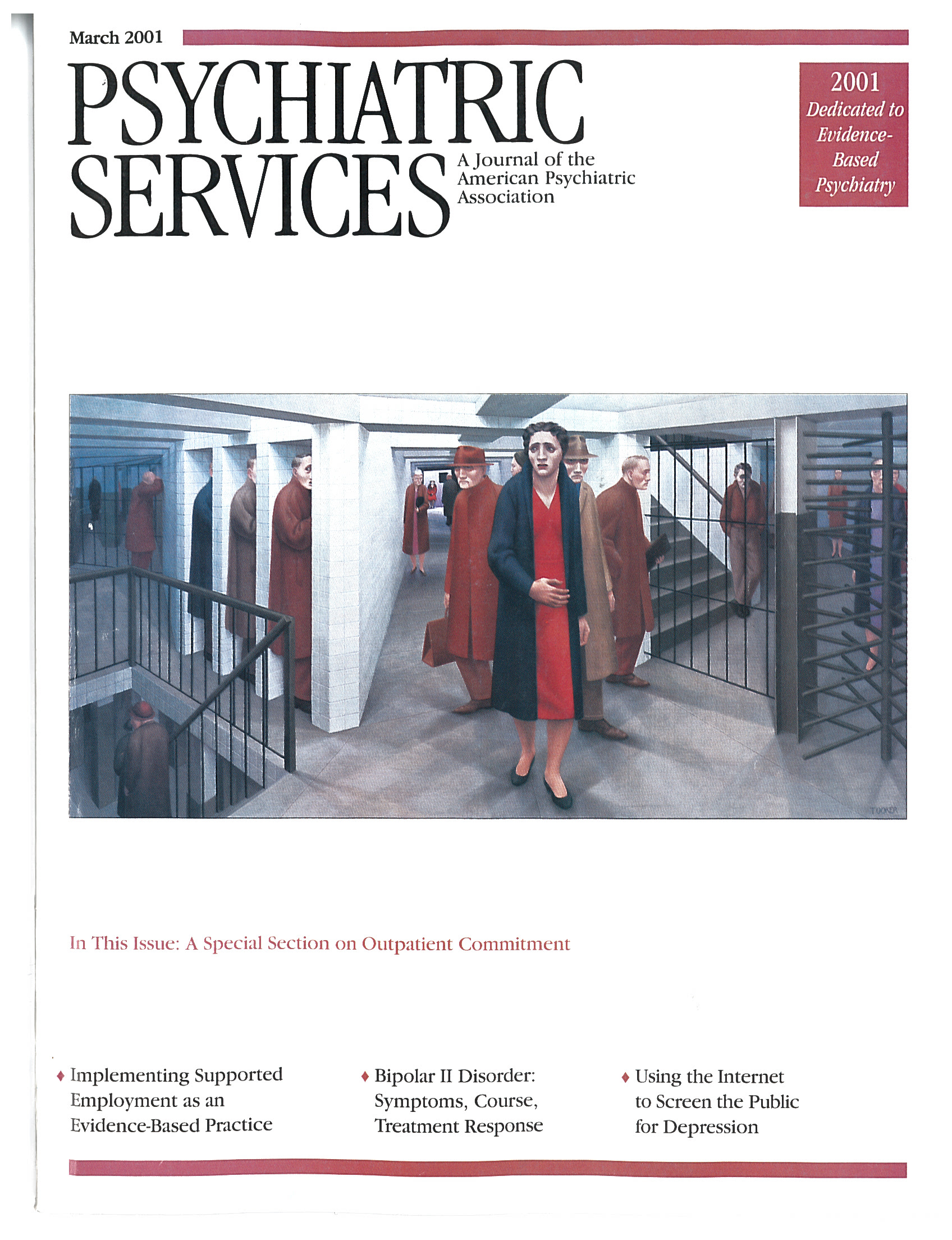You Must Read This
Involuntary outpatient commitment is a contemporary lightning-rod issue in American psychiatry. Its assets and liabilities are all too often lost sight of in a cacophonous bluster that obscures reasoned positions. This month's special section clarifies issues related to outpatient commitment by providing a range of opinions and the data currently available.
Why all the brouhaha now about coercion and involuntariness in community settings? Throughout the 20th century, psychiatry has had the authority to require compliance with outpatient treatment. It has exercised this authority within a belief system that has viewed benevolent coercion as necessary for treating some persons with serious mental illness. For example, in 1938 a total of 2,269 of 26,086 patients in the Massachusetts state hospital system (8.6 percent) were on "visit status." These patients lived outside the hospital, received some form of supervision, and could be returned to the institution at the superintendent's discretion. That discussions of coercion or involuntariness now focus on coercion outside of institutions may simply reflect the fact that most potential beneficiaries now live outside of state hospitals.
As I read the papers in the special section, I noted several conclusions. Involuntary outpatient commitment should not be seen simply as a promise, problem, panacea, or Pandora's box. It is not a remedy for resource-poor community mental health programs. Adequate resources do not obviate the need for outpatient commitment for a select cohort of treatable persons who are noncompliant. Outpatient commitment should not be embraced as a means to address headline-grabbing random acts of violence. Any expansion of the use of outpatient commitment may initially require expanded or redeployed resources. The net expense or net savings of mental health care dollars is unclear. There is no evidence that those who favor outpatient commitment would not prefer voluntary outpatient treatment if it were shown to be equally effective.
Many questions remain unanswered. If outpatient commitment commits both patients and providers to treatment, whose commitment has the more robust effect on outcome? Given practical and ethical considerations, can a truly randomized, valid study of outpatient commitment be done? Where are the studies of the purported harm of outpatient commitment? Where is research on competency-based rather than dangerousness-based outpatient commitment?
In reading this special section, it is important to remember that the perception of coercion is a subjective experience along a broad continuum: one person's coercion may be another's permission.



